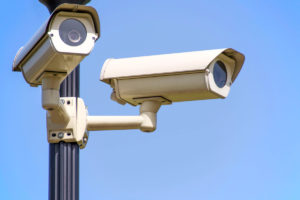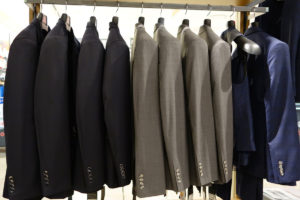 I live in a resort area so we get all types of fraud activity. Stolen credit cards, stolen and counterfeit checks and counterfeit cash, in addition to the day to day shoplifting and employee theft cases keep us busy. For L.P. departments in our area this can become overwhelming from an investigation standpoint. Employee training and awareness is crucial to effectively combat this activity, L.P. Managers can’t be in a store 7 days a week and even if we could be we can’t see everything. Store associates and managers are the first line of defense in preventing fraud at the point of sale. Here are some tips to identify and deter financial transaction fraud.
I live in a resort area so we get all types of fraud activity. Stolen credit cards, stolen and counterfeit checks and counterfeit cash, in addition to the day to day shoplifting and employee theft cases keep us busy. For L.P. departments in our area this can become overwhelming from an investigation standpoint. Employee training and awareness is crucial to effectively combat this activity, L.P. Managers can’t be in a store 7 days a week and even if we could be we can’t see everything. Store associates and managers are the first line of defense in preventing fraud at the point of sale. Here are some tips to identify and deter financial transaction fraud.
Let’s start with credit card fraud. I used to harp on cashiers to look for signatures on the back of cards and if a card wasn’t signed or had “See I.D.” written on it, they were expected to ask for ID. When proper ID was not produced a transaction was declined, no exceptions. With today’s technology, people swipe their cards or hold smartphones up to the card reader and the information is transferred to the Point of Sale (POS). Chip cards are also considered a more secure means of payment than the older self-swipe. With chip technology every transaction has a unique code attached to it, whereas the old mag stripe cards had unchanging data that could be replicated and transferred to another card (source creditcard.com). Because chip enabled cards still have mag stripes and not all companies have changed to chip reader technology, fraud is still an opportunity. To minimize risk, if a small transaction for a few dollars is followed by a large dollar transaction be cautious, there is a strong possibility a stolen card is being used. The small transaction acts as a test to be sure the card is going to work. Second, if you have chip readers, don’t bypass them. Ask for a different form of payment if necessary but let the system work for you. You are always free to ask for an ID to compare to the card, and turn down a sale if the customer doesn’t have one.
Check fraud is becoming less common. The advent of Apple Pay, Pay Pal, and pay apps for various companies, has resulted in fewer checks being written. Still, business checks are pretty common and a personal check is tendered from time to time. Check creation kits are easy to purchase and with a routing and account number it is a piece of cake to create a fraudulent check with any name, address or phone number you want on it. The good thieves will also have fake ID’s to match the information on the check. A few actions you can take to reduce the chance of check fraud in your store include, requiring a government issued ID for check transactions and recording the ID number on the check. If your POS system can electronically process a check let it. Don’t override the system if a check is declined. Look for high dollar checks being written in the later evening hours and on weekends when banks tend to be closed. The bad guys are counting on you not being able to verify account information.
Counterfeit money is a problem and with high quality printers available on today’s market it is easier for criminals to create currency that at first glance appears very convincing. Without going into specifics, counterfeiters have found ways to get paper that can pass muster with regular people like you and me, though trained bankers would notice the difference in quality. They spread their money around a town for a few days and then leave before authorities can start following a trail. The only thing I can suggest to combat these thieves is to watch for the small purchases, such as a pack of gum or soft drink being purchased with a $50 or $100 bill. The criminals are getting real money in change at the cost of no more than a couple of bucks. Along the same lines, watch for the $1 bills that have been altered by pasting higher denominations on two of the corners, usually $50’s and $100’s although sometimes $20’s are used. These bills will be mixed in with several other bills with the dollar corners concealed in the stack.
One last word of caution, if you use the words “In Training” on your name badges, stop! Criminals look for people they think are new and easier to con. Identifying your new people is an invitation for trouble. Financial transaction fraud can be expensive and cost you a lot of money. Properly training cashiers and monitoring transactions can help you deter the crime from happening in the first place.


 Would you knowingly buy a car with a defective engine? Of course not! So why would you hire a “defective employee”?
Would you knowingly buy a car with a defective engine? Of course not! So why would you hire a “defective employee”? Daylight savings time is over and for most of us in the U.S. (yes, there are a few exceptions) we have moved our clocks and groaned at the loss of a precious hour of sleep. We have to adjust and get used to the change and eventually we do. For our personal lives there isn’t a lot of impact, once we are used to it we do benefit from the additional daylight and get to enjoy more outdoor activity. The time change is useful as a reminder for changing batteries in smoke detectors. You may even use it as a point when you will start planning your summer vacations. For business owners daylight savings time can be a reminder that it is time to conduct a store physical security review. Time changes may not impact us much individually but for retailers there is an impact for the building, employees and your customers.
Daylight savings time is over and for most of us in the U.S. (yes, there are a few exceptions) we have moved our clocks and groaned at the loss of a precious hour of sleep. We have to adjust and get used to the change and eventually we do. For our personal lives there isn’t a lot of impact, once we are used to it we do benefit from the additional daylight and get to enjoy more outdoor activity. The time change is useful as a reminder for changing batteries in smoke detectors. You may even use it as a point when you will start planning your summer vacations. For business owners daylight savings time can be a reminder that it is time to conduct a store physical security review. Time changes may not impact us much individually but for retailers there is an impact for the building, employees and your customers. When do closed circuit television malfunctions occur? I’m sure you can guess, it is always at the point when you need it most. I can’t recall the number of instances when I had a cash shortage I needed to look for and when I attempted to pull video through the DVR the video was already dropped or the camera wasn’t functioning. I remember having to look for an image of a suspect in a shoplifting incident and the picture was too grainy to be of any use due to a dirty camera lens or dome. One slightly embarrassing situation that stands out in my mind involved robberies that were taking place behind our store. I had developed a great working relationship with our local police department and they knew the quality of our camera system. Investigators came to me seeking assistance with outdoor camera footage to try to identify the criminals conducting the robberies. I pulled up video of the date and time in question and much to my chagrin the camera had a great shot of the ground directly underneath it. A power surge had impacted the programming of the pan/tilt/zoom (PTZ) camera and placed it in a default position. I had not noticed the problem in a timely fashion and could not recall how long it was before I did catch the issue. The good news was I was able to re-program the camera and eventually we did provide footage of an incident a little later that led to an arrest.
When do closed circuit television malfunctions occur? I’m sure you can guess, it is always at the point when you need it most. I can’t recall the number of instances when I had a cash shortage I needed to look for and when I attempted to pull video through the DVR the video was already dropped or the camera wasn’t functioning. I remember having to look for an image of a suspect in a shoplifting incident and the picture was too grainy to be of any use due to a dirty camera lens or dome. One slightly embarrassing situation that stands out in my mind involved robberies that were taking place behind our store. I had developed a great working relationship with our local police department and they knew the quality of our camera system. Investigators came to me seeking assistance with outdoor camera footage to try to identify the criminals conducting the robberies. I pulled up video of the date and time in question and much to my chagrin the camera had a great shot of the ground directly underneath it. A power surge had impacted the programming of the pan/tilt/zoom (PTZ) camera and placed it in a default position. I had not noticed the problem in a timely fashion and could not recall how long it was before I did catch the issue. The good news was I was able to re-program the camera and eventually we did provide footage of an incident a little later that led to an arrest. When I was a Loss Prevention Manager we would catch a shoplifter or a dishonest employee and recover merchandise. Depending on the type of case we would sometimes hold the evidence for a few days until the court hearing other times it could be much longer. If a shoplifter refused to plead guilty or requested a jury trial cases could be held up for months if not longer. I had several cases that went on for more than a year. Felony shoplifting cases and juvenile cases in our jurisdiction often meant lengthy wait periods depending on caseloads in the court. I also recall at least one shoplifting case in which the lawyer for the defendant requested extensions three separate times hoping that I would not appear for the hearing and the case would be dropped. No dice, I showed up for each hearing and finally the lawyer entered a guilty plea. The problem with the lengthy cases was that we would have to hold the evidence until the cases were settled. In some situations the police department held the recovered merchandise, such as when they stopped the suspect after the suspect fled the store. When merchandise has to be held for long periods it is possible for it to sit in evidence and be forgotten about. For stores that are too small to have security or Loss Prevention Departments management may be storing that evidence and no one is thinking about following up on cases with their police department or court.
When I was a Loss Prevention Manager we would catch a shoplifter or a dishonest employee and recover merchandise. Depending on the type of case we would sometimes hold the evidence for a few days until the court hearing other times it could be much longer. If a shoplifter refused to plead guilty or requested a jury trial cases could be held up for months if not longer. I had several cases that went on for more than a year. Felony shoplifting cases and juvenile cases in our jurisdiction often meant lengthy wait periods depending on caseloads in the court. I also recall at least one shoplifting case in which the lawyer for the defendant requested extensions three separate times hoping that I would not appear for the hearing and the case would be dropped. No dice, I showed up for each hearing and finally the lawyer entered a guilty plea. The problem with the lengthy cases was that we would have to hold the evidence until the cases were settled. In some situations the police department held the recovered merchandise, such as when they stopped the suspect after the suspect fled the store. When merchandise has to be held for long periods it is possible for it to sit in evidence and be forgotten about. For stores that are too small to have security or Loss Prevention Departments management may be storing that evidence and no one is thinking about following up on cases with their police department or court. The National Association for Shoplifting Prevention
The National Association for Shoplifting Prevention Some shoplifters are violent. I follow these incidents and they seem to be becoming more frequent. The reasons why are many and there is plenty of blame to go around: State and local governments, courts and lax Judges, parents and even retailers themselves. Much of that is out of our control. We must keep violent and non-violent shoplifters from even entering our stores.
Some shoplifters are violent. I follow these incidents and they seem to be becoming more frequent. The reasons why are many and there is plenty of blame to go around: State and local governments, courts and lax Judges, parents and even retailers themselves. Much of that is out of our control. We must keep violent and non-violent shoplifters from even entering our stores.